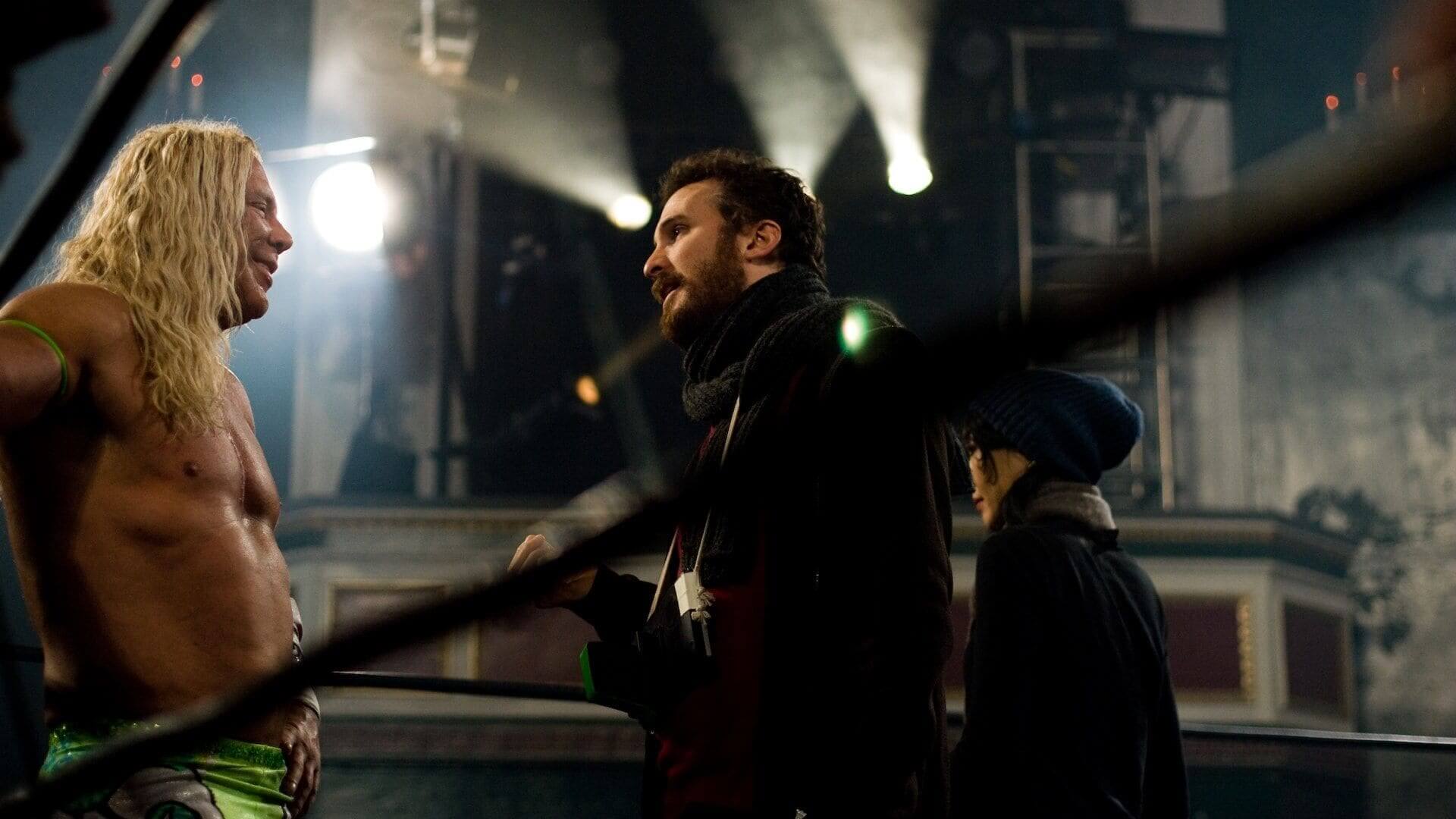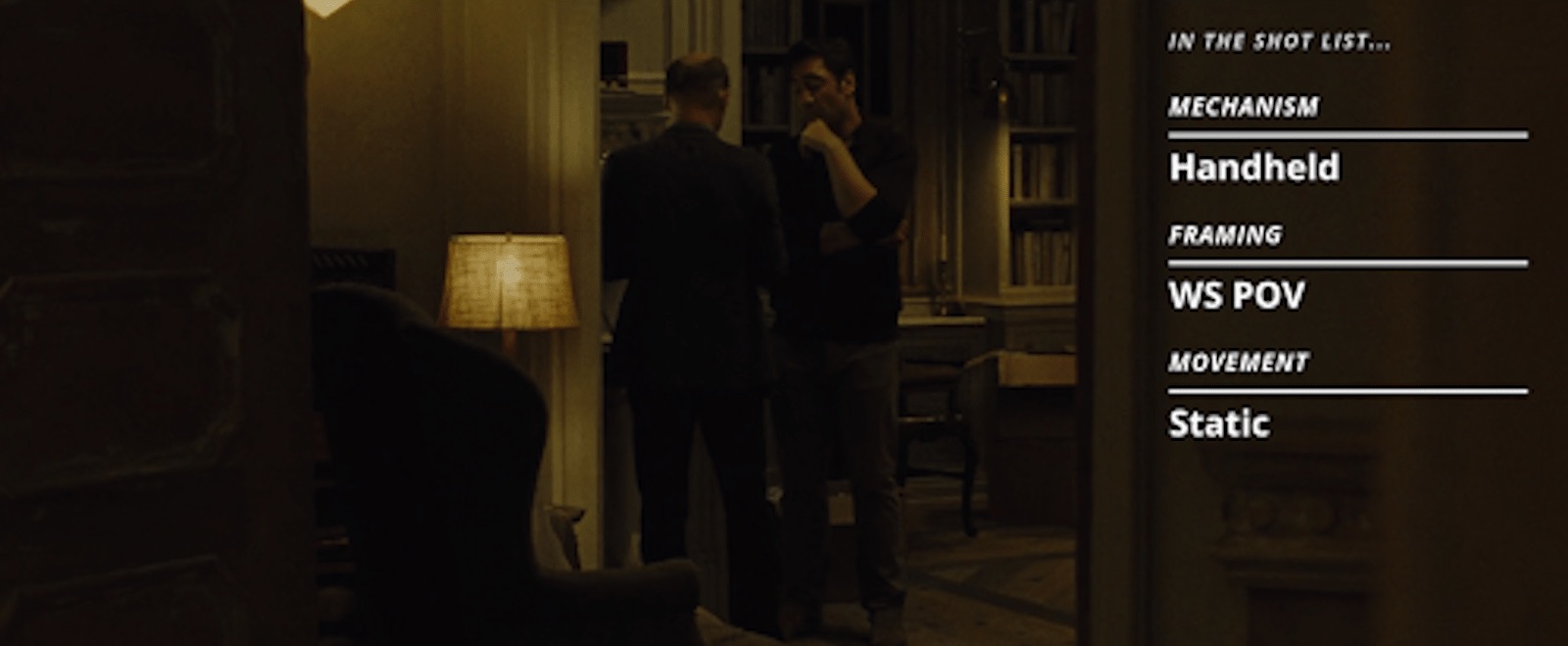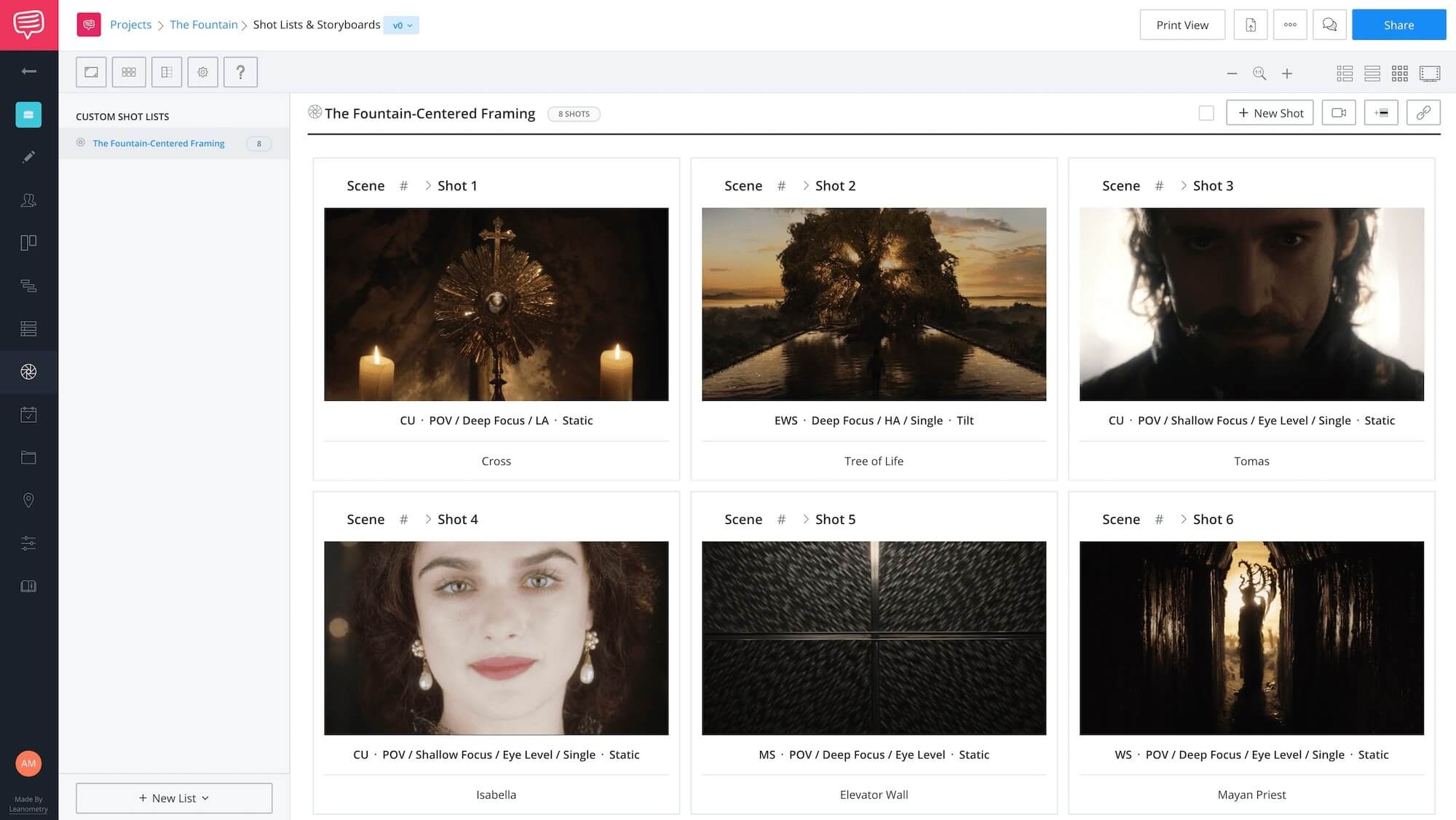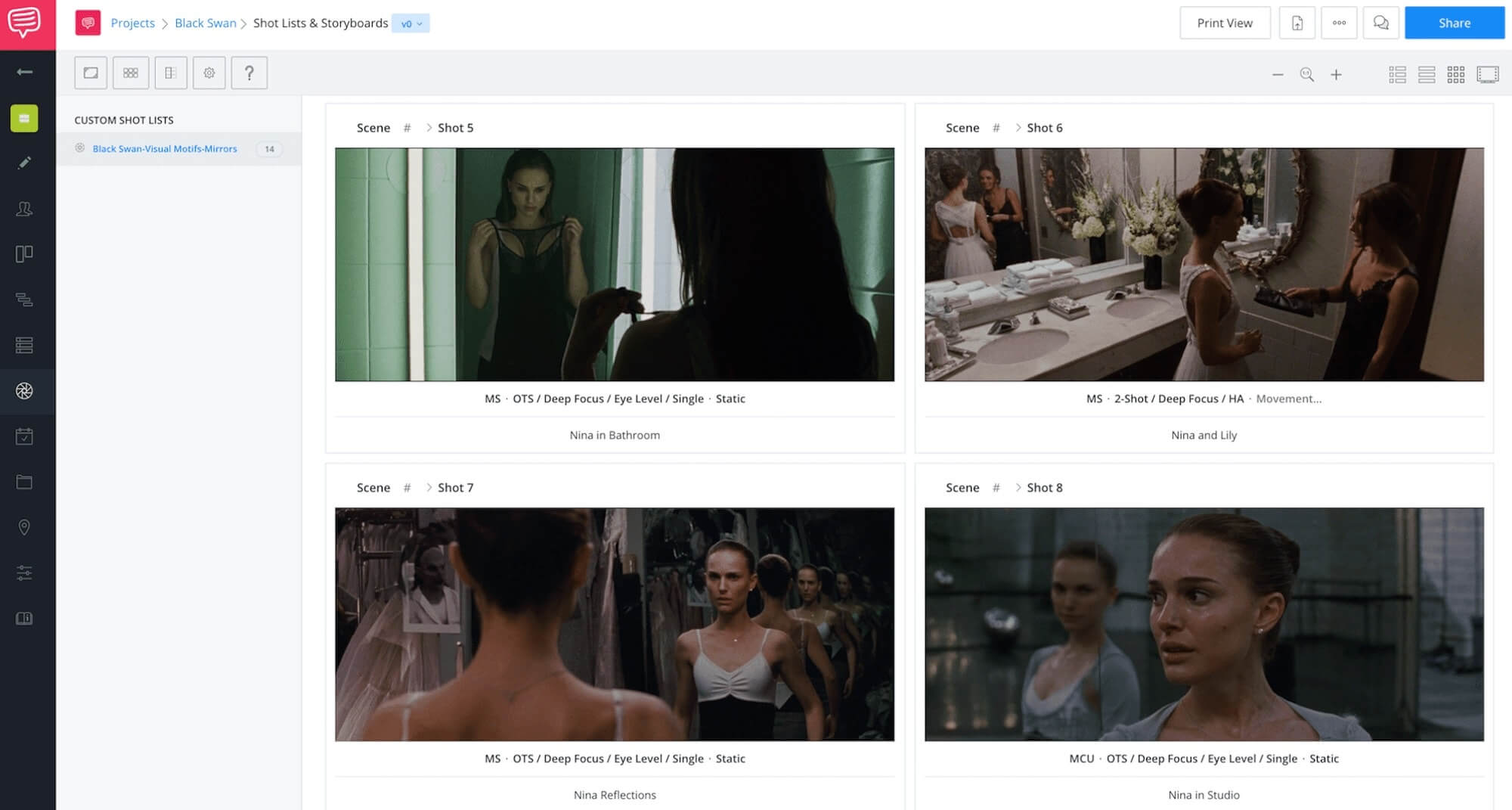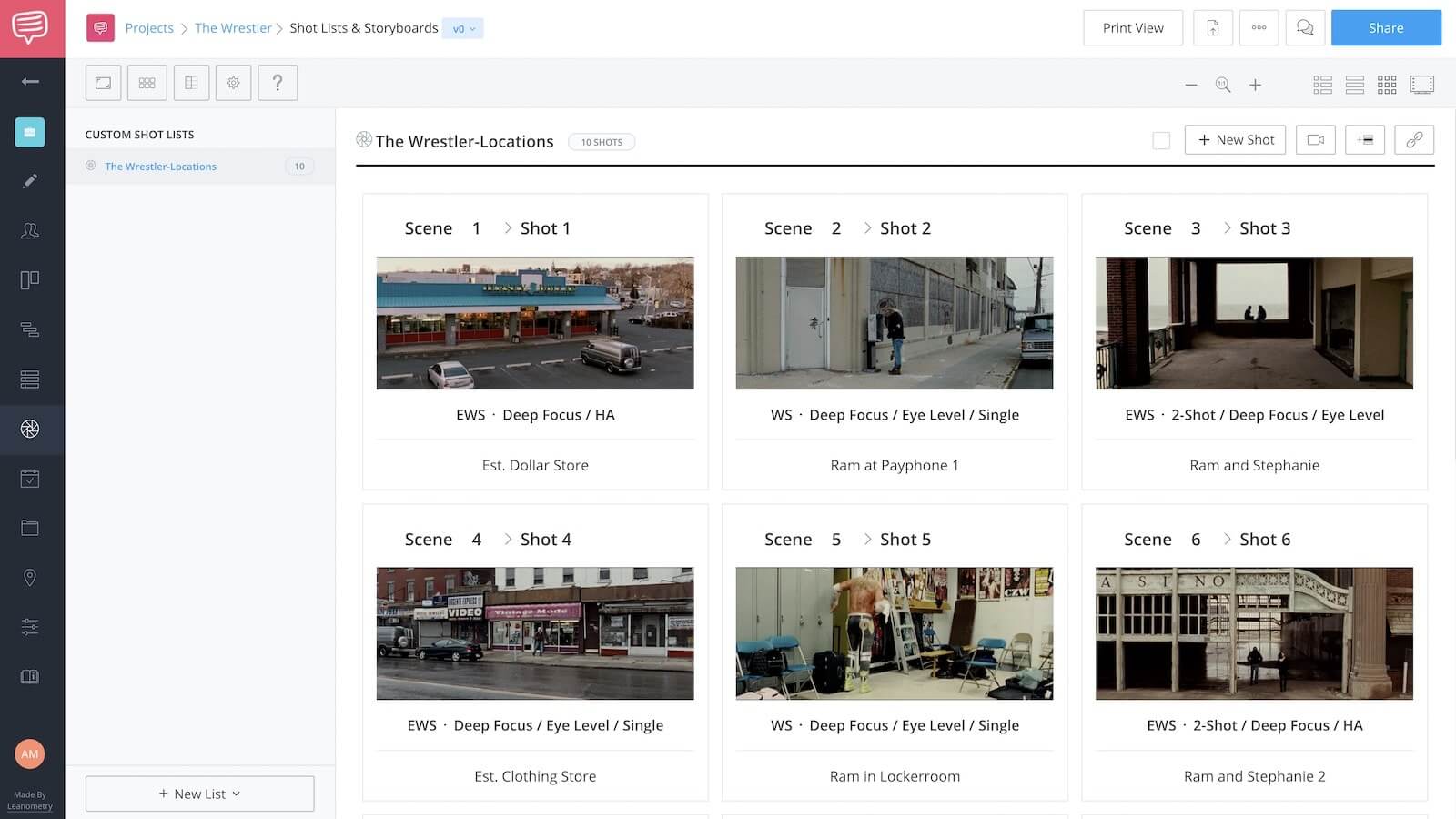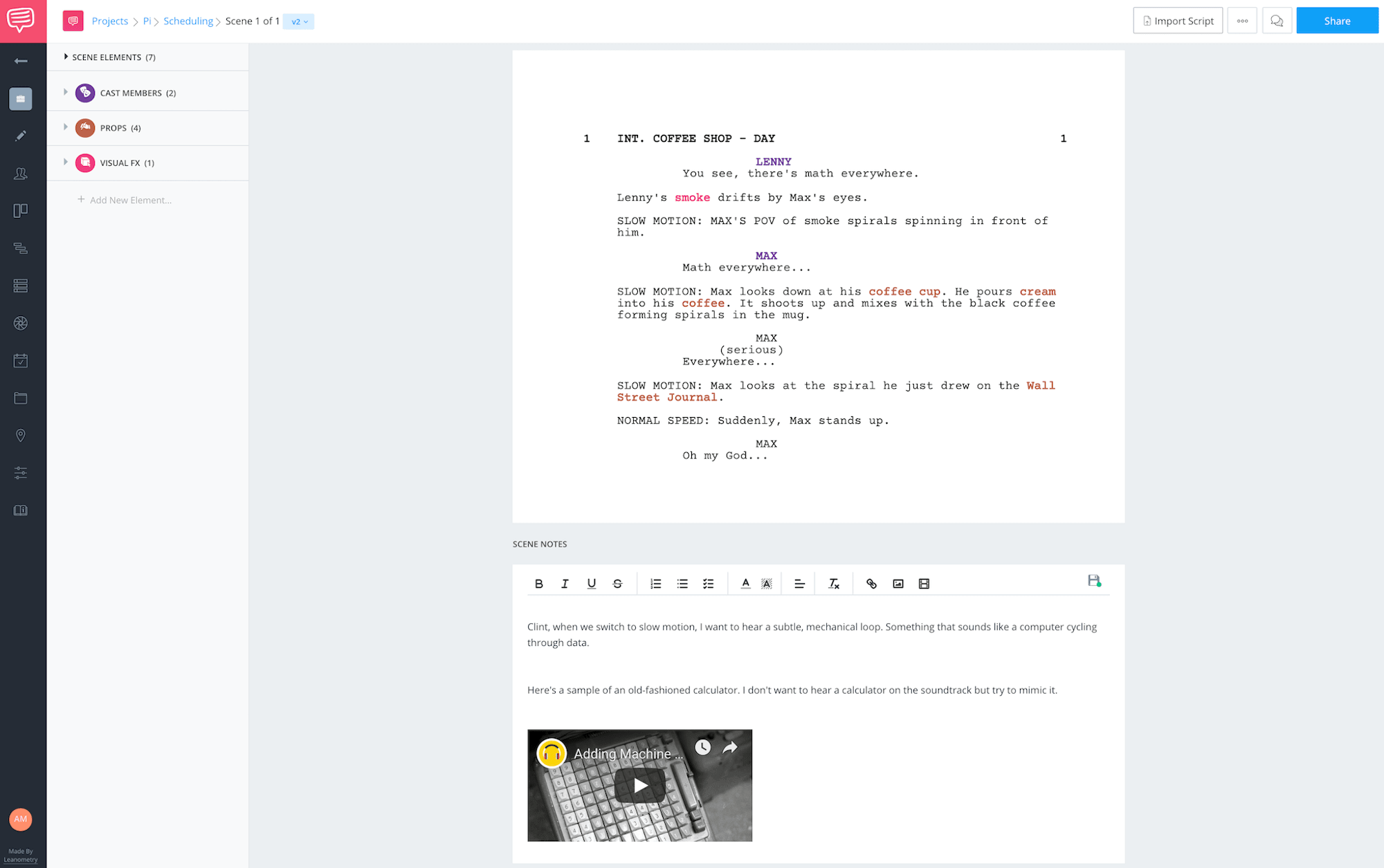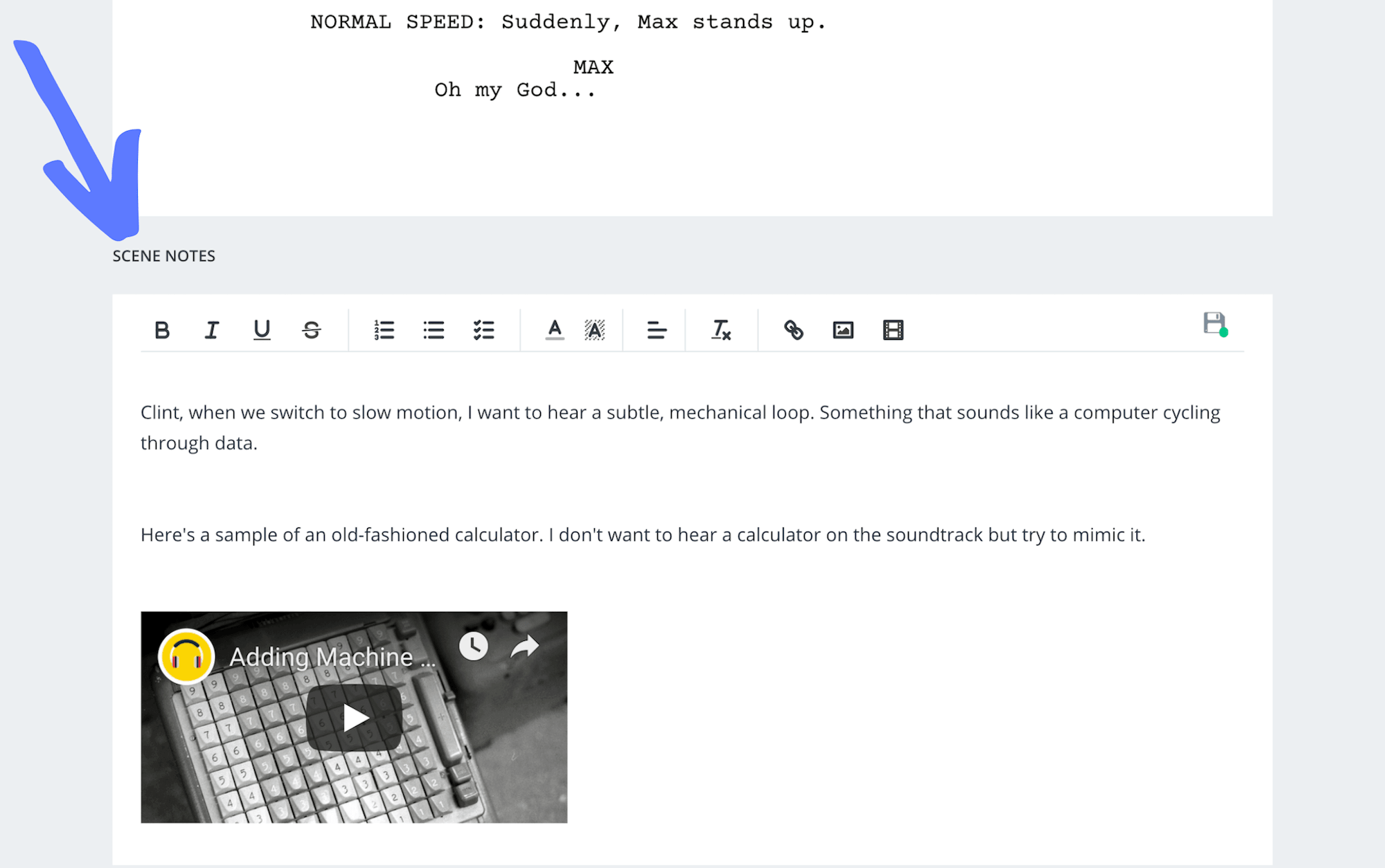Darren Aronofsky movies show us the most complex regions of the human psyche. As the Black Swan director says, “Because we are filmmakers, we can show where a person’s mind goes.”
Aronofsky is able to use cinematic language to visualize the abstract emotions of everyday experience. But how exactly does he achieve this? In this post, we’re going to examine the ways director Darren Aronofsky’s directing techniques enhance some of the strangest worlds imaginable. Alright, let’s get started!
Table of Contents
Everything you need to know about Darren Aronofsky.
1
Darren Aronofsky's Filmography
The Complete List
Filmography
Darren Aronofsky Movies
Here's our complete list...enjoy!
Pi (1998)
A paranoid mathematician searches for a key number that will unlock the universal patterns found in nature.
Requiem for a Dream (2000)
The drug-induced utopias of four Coney Island people are shattered when their addictions run deep.
The Fountain (2006)
As a modern-day scientist, Tommy is struggling with mortality, desperately searching for the medical breakthrough that will save the life of his cancer-stricken wife, Izzi.
The Wrestler (2008)
A faded professional wrestler must retire, but finds his quest for a new life outside the ring a dispiriting struggle.
Black Swan (2010)
A committed dancer struggles to maintain her sanity after winning the lead role in a production of Tchaikovsky's "Swan Lake".
Noah (2014)
Noah (Russell Crowe) is chosen by God to undertake a momentous mission before an apocalyptic flood cleanses the world.
Mother! (2017)
A couple's relationship is tested when uninvited guests arrive at their home, disrupting their tranquil existence.
Now that you're reminded of what he's worked on, let's jump into some of these films, and explore the craft of Aronofsky.
2
Cinematography
Aronofsky's Craft
2.1 Oppressive Close-ups in Mother!
Crafting point of view
In Mother!, Darren Aronofsky's latest film, Jennifer Lawrence stars as the eponymous character. It is a chamber play, heavy with symbolism and allegory. It is also a tightly constructed thriller in which the tension ramps up throughout the film.
Mother is confused about secrets her husband, Him (Javier Bardem) is hiding. She is also concerned with the visitors who come to stay (Ed Harris and Michelle Pfeiffer). Strange events are happening around Mother as she slowly loses the peace and tranquility of her home.
Mother is not only the main character, but we also occupy her point of view almost exclusively. Her world is crumbling around her and we are made to identify with her at all times.
How do you construct “point of view” in a film? What techniques does Aronofsky use to keep us engaged with the story through a single character?
For a large majority of the film, we alternate between close-ups of Mother and her POV. The handheld camera moves with her, either following behind or leading her. When she looks at someone, we cut between her close-up and medium shots of the other characters.
Consider this scene: Mother looks in on Him and Man as they have a conversation in his study.
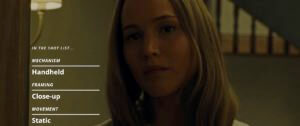
Identifying with Mother
Most of Mother's shots are close-ups with Man and Him framed in wide and medium two-shots.
Watching through her eyes
The predominance of close-ups creates a claustrophobic experience for Mother and for the audience. We are meant to empathize with Mother as destruction and chaos invade her home.
These close-ups on Mother limit our empathy with the other characters as well. Mother is confused and doesn't understand who these people are, what they're doing in her home and what they want. Because we never adopt their point of view, we are likewise confused.
This is a vital ingredient to the suspense and tension of the film.
Related Posts
2.2 Extreme Close-ups in Requiem for a Dream
Emphasizing a mental state
Traditionally, extreme close-ups are used to emphasize heightened moments of emotion. Images such as Marion Crane’s scream in Psycho and the eyeball slicing of Un Chien Andalou, make the element of fear far more tangible and visceral. We’ve also seen this tool used by modern filmmakers such as Alejandro González Iñárritu.
This tactic has become synonymous with Darren Aronofsky films. But unlike his contemporaries, Aronofsky uses this shot to emphasize a character’s mental state. A close-up generally eliminates the distraction of the environment so that a viewer can focus on the character.
Look below to learn about Aronofsky's visual style:
Darren Aronofsky's visual style
Prime examples are the iconic drug-taking scenes from.
Aronofsky takes it one step further. He phases out the physicality of the protagonist and dives into the molecules making up their reality.
Requiem For A Dream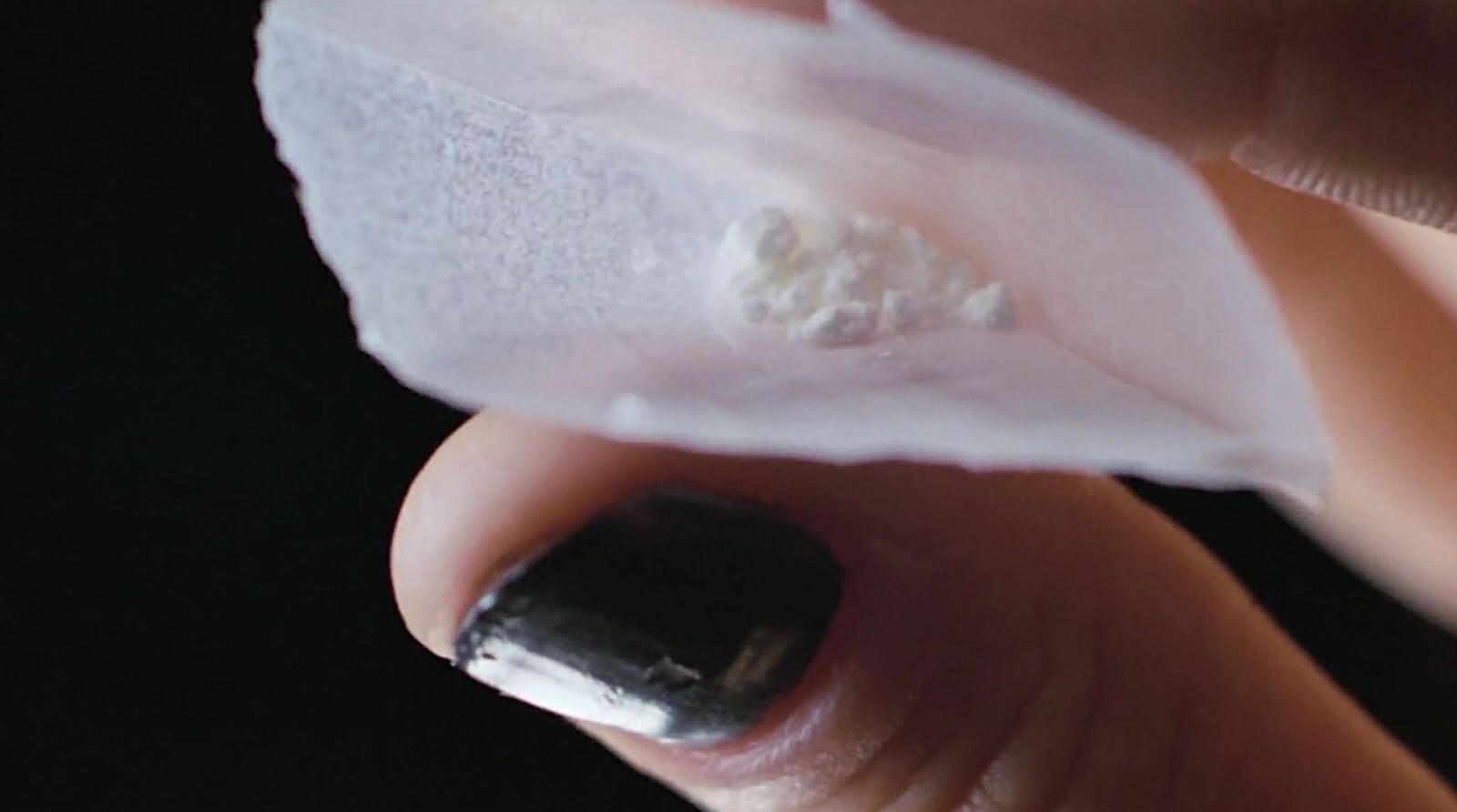
Aronofsky movies are seductive and dangerous
Frequently in cinema, a character will inject a substance and stumble about in their drug-induced stupor. This is not enough for Aronofsky.
The Requiem For A Dream director wants to show the connection between the mind and how realities are created.
Everything comes from the human brain. The way we see colors, the way we love and the way we navigate the world. If something disrupts this nervous system, then reality as we know it changes.
There is a complex, yet fragile component to this existence. Here, when the mind changes, then all of a character’s reality changes.
For director Darren Aronofsky, it’s not just about showing a character getting emotional. The filmmaker wants to understand the physical components behind this change.
With the extreme close-up, he can examine the relationship between the physical and mental.
2.3 God’s Eye View in Noah
An omniscient perspective
The God’s Eye View is one of the most-recognizable camera shots in cinema. As the title suggests, the shot consists of an overhead angle achieved by placing the camera directly above the character.
When employed, this particular shot bestows a great degree of power upon the audience. From here viewers recognize and interpret events much differently than the characters will.
A deity is supposed to be all-powerful and knowing. With the benefit of omniscience, an audience can experience the emotions of joy and frustration more intensely. This approach is a familiar motif in Darren Aronofsky films.
Take the moment in Noah when Methuselah confronts the flood waters.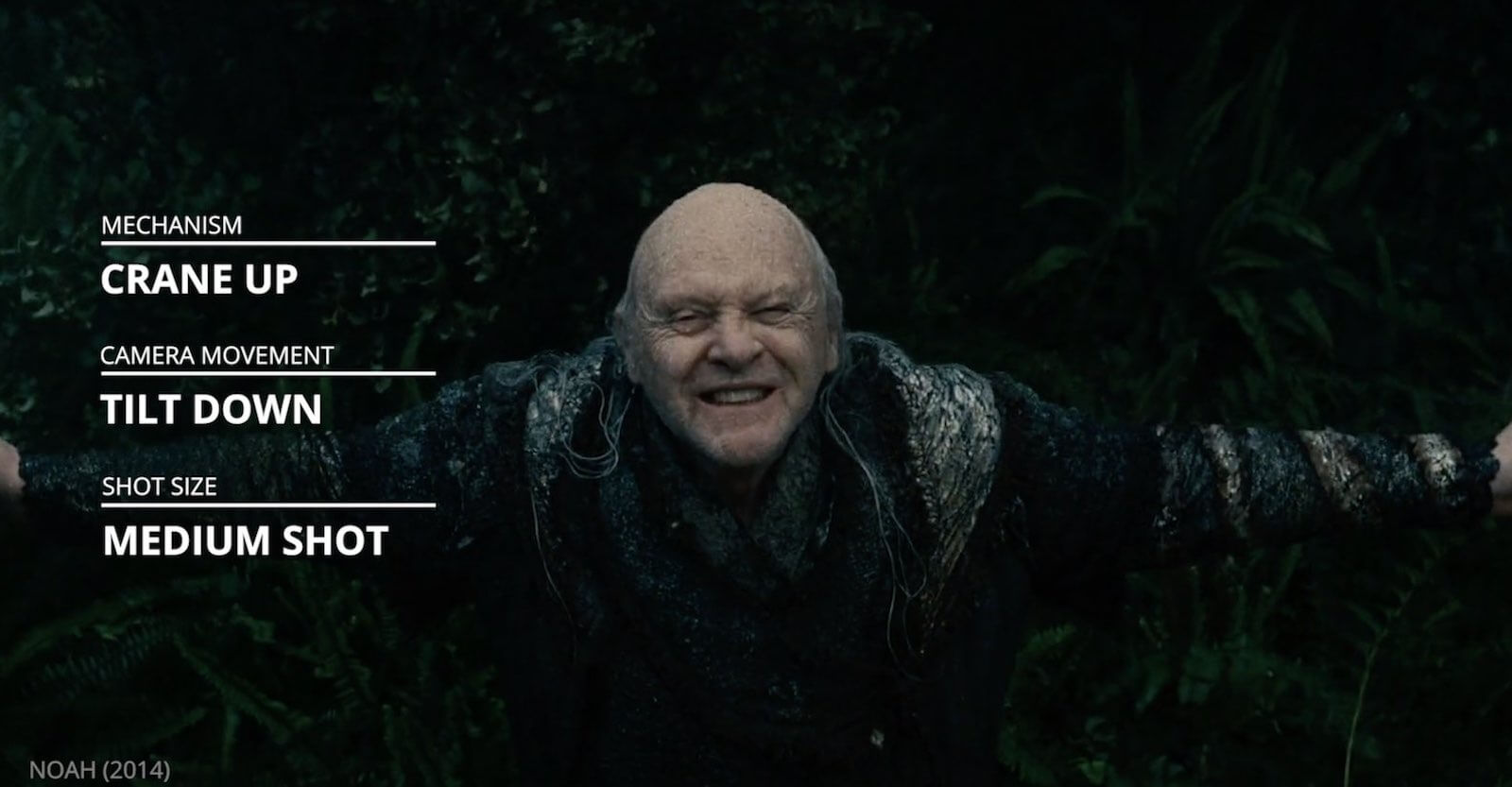
Use overhead shots to heighten emotion
Methuselah looks up to God in a final moment of recognition and acceptance. The audience is given this privileged perspective for his final moments. We connect with this character through the eyes of his creator.
Despite dire consequences, his characters will place themselves in precarious situations to achieve some kind of pleasure or transcendence.
Like the God of Genesis, Aronofsky creates characters that succeed and others that fail. Like Methuselah, some will accept destruction knowing that it leads to salvation. Others, like Marion in Requiem for a Dream, will not.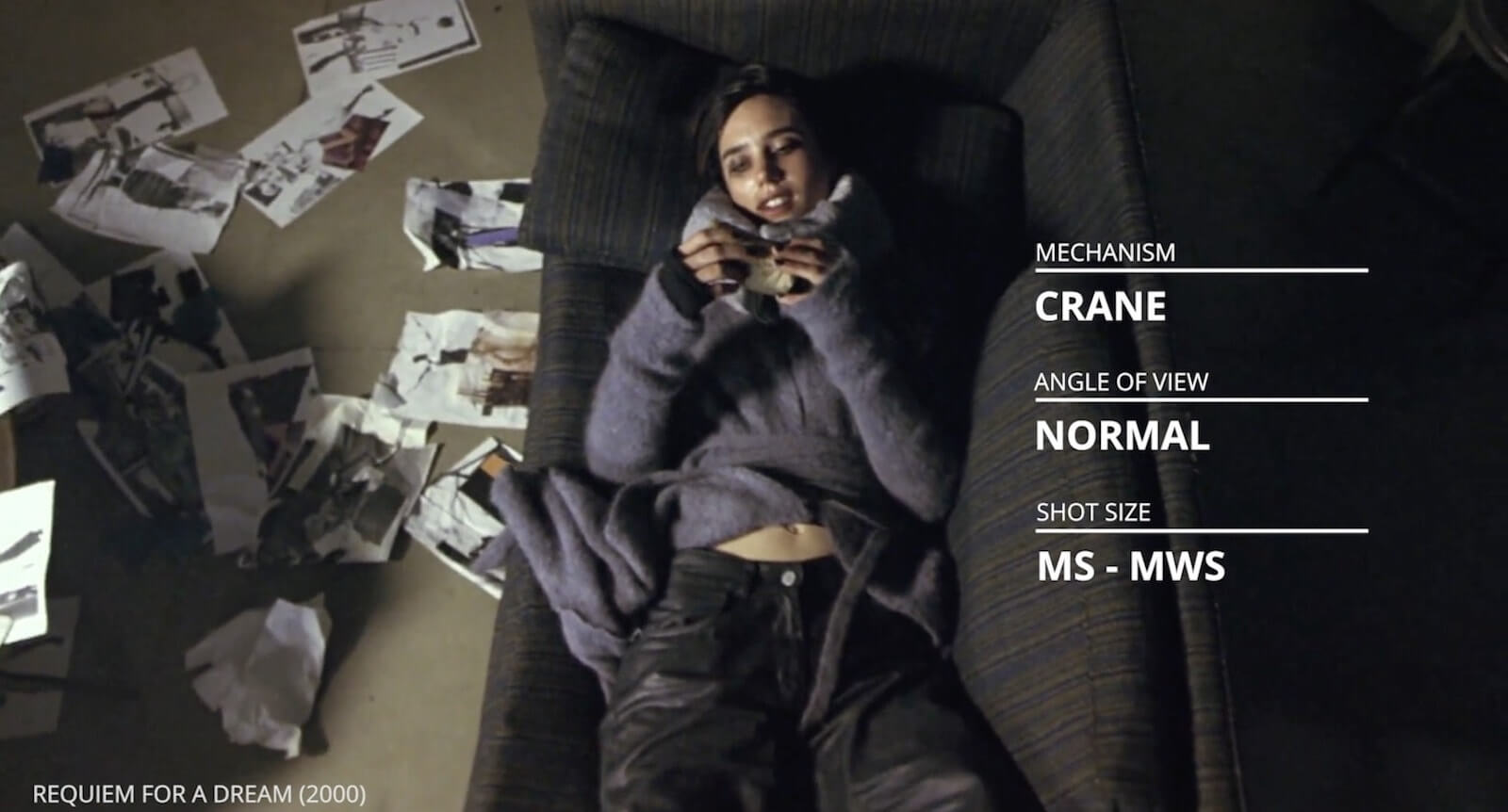
The characters choose between salvation and destruction
Yes, the camera perspective provides us a more well-rounded view of the action on-screen. But Aronofsky doesn’t just use the tool to progress the story. He employs it as a commentary on the entire storytelling process.
Whether you’re a fan or not, you have to admit that Darren Aronofsky movies are unique and uncompromising. And like the director, his characters also embody this extreme determination.
Related Posts
2.4 Tracking Shots in Pi
Tracking characters in chaos
There’s much debate about whether long, elaborate tracking shots are beneficial to a project, or merely self-indulgent.
Filmmakers like Paul Thomas Anderson say it enables an audience to be more in-tune with characters and that the length of the shots also heightens the suspense of a scene.
Aronofsky also subscribes to this philosophy. Yet he approaches the mechanics of it in a unique way.
Traditionally, tracking shots run alongside a character, mimicking their movement. However, in Darren Aronofsky movies, the tracking is more violent.
Consider the frantic moments of Pi when Max Cohen moves about the New York subway system. Aronofsky used a camera rig called a Snorricam which is mounted to a character’s chest. We hold still on a character’s close-up as the world around them whirls.
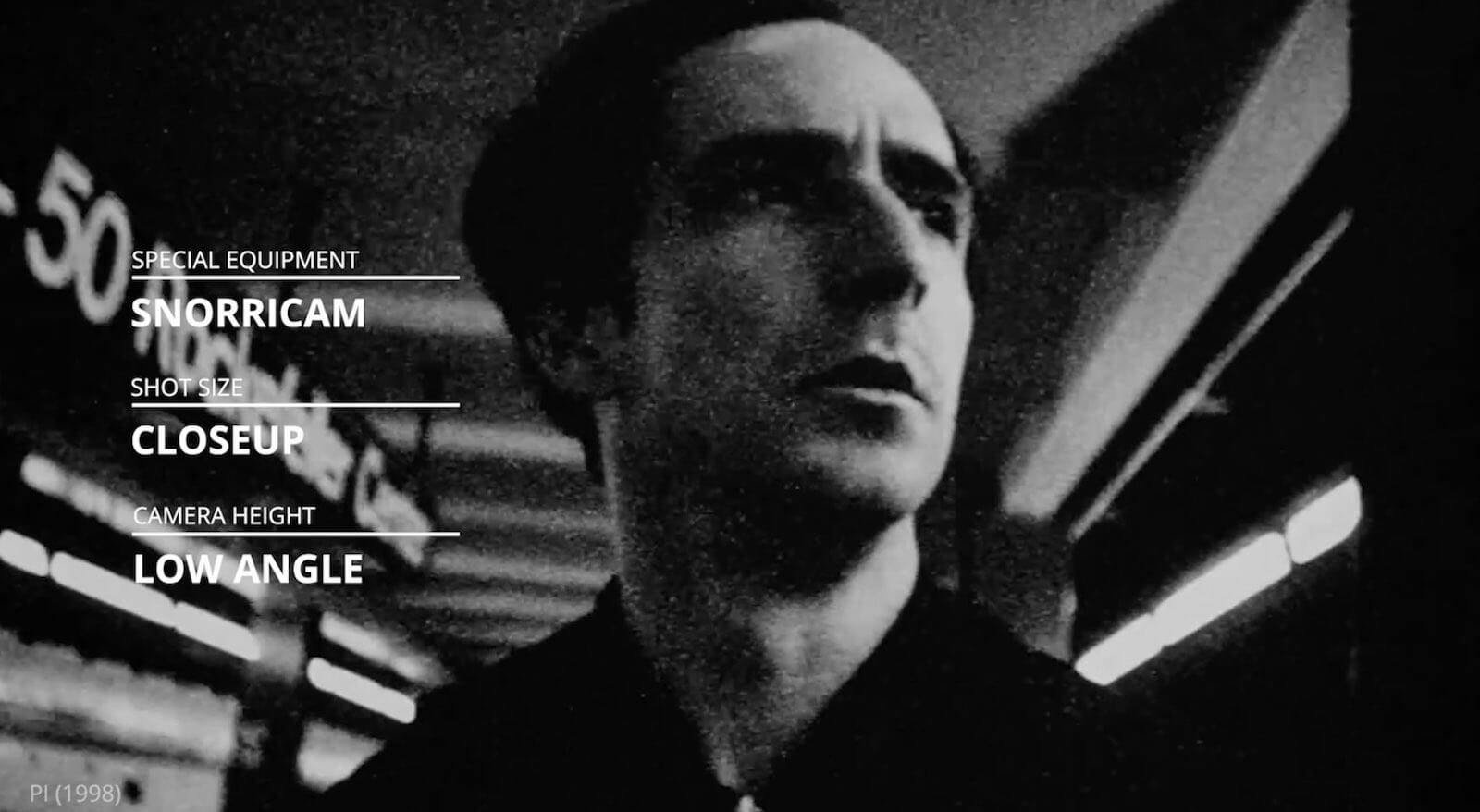
Tracking shots take on a violent quality in Darren Aronofsky films
The camera movement mirrors the atmosphere of chaos and disorder. Rather than smoothly following the protagonist, we get the sensation of being dragged against our will.
But Aronofsky and the characters will not allow us that escape. We are tethered to these characters and must endure the same uncertainty and misery.
Related Posts
2.5 Centered Framing in The Fountain
Framing desire and purpose
In the rules of composition and framing, centering a character highlights their importance. Here, characters are within reach of objects and ideas that they have long fought for.
For Tomas in The Fountain, it is the possibility of spending eternity with the one he loves. By placing an object or character in the center of the frame, a director imbues them with importance. It is a signal to the audience that what we're looking at matters.
But this type of centered framing can also inform the character. If we're looking through the character's POV, that object becomes important to them as well.
What does your character want? You can show us through their POV by placing that object in the center of the frame.
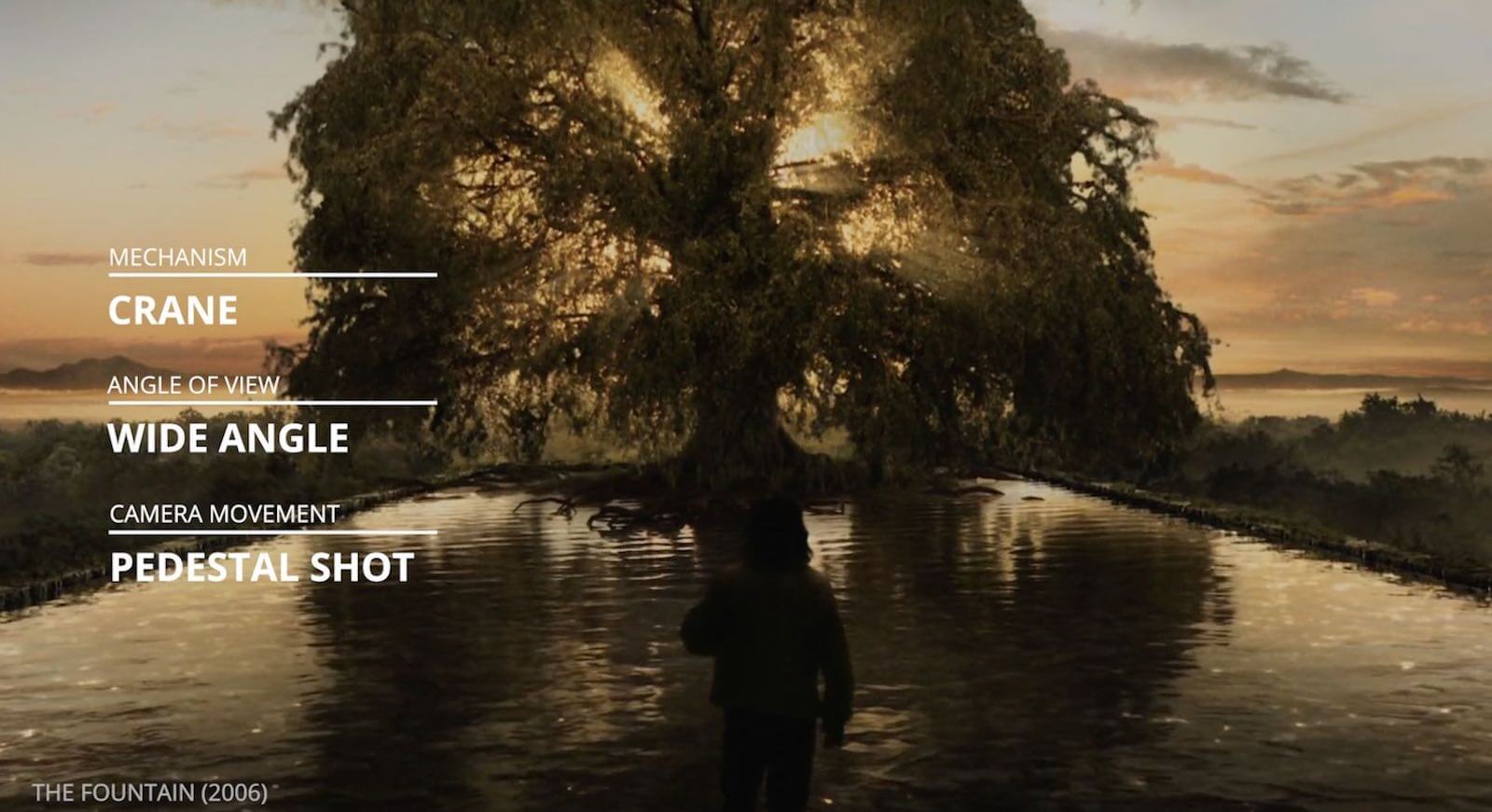
Darren Aronofsky films place objects of desire in the center
Darren Aronofsky uses this technique effectively in The Fountain. The film is split into three stories about characters in search of something. Hugh Jackman plays all three characters, men who will stop at nothing to find they are searching for.
Whether the goal is the woman he loves, the Tree of Life or a star on the verge of supernova, their importance is clear through framing.
To see examples of centered framing in The Fountain, check out the shot list we made using StudioBinder.The effect of this technique is doubled when you also center the character as well. This allows the audience a clear path to understanding the character and what they want.
Our empathy of the character is elevated by their focus on the object.
3
Editing
with Aronofsky
3.1 Split Screen and Hip Hop Montage in Requiem for a Dream
Division and repetition
In Requiem for a Dream, Aronofsky uses split screens to great effect. In general, the divided frame is used to mark the separation between characters. Even if they're in the same room.
So, why separate them with a split screen?
Let's look at this example: a scene between Harry (Jared Leto) and Marion (Jennifer Connelly). The young lovers share an intimate moment in bed. It is the most touching and peaceful moment in the otherwise nightmarish film.
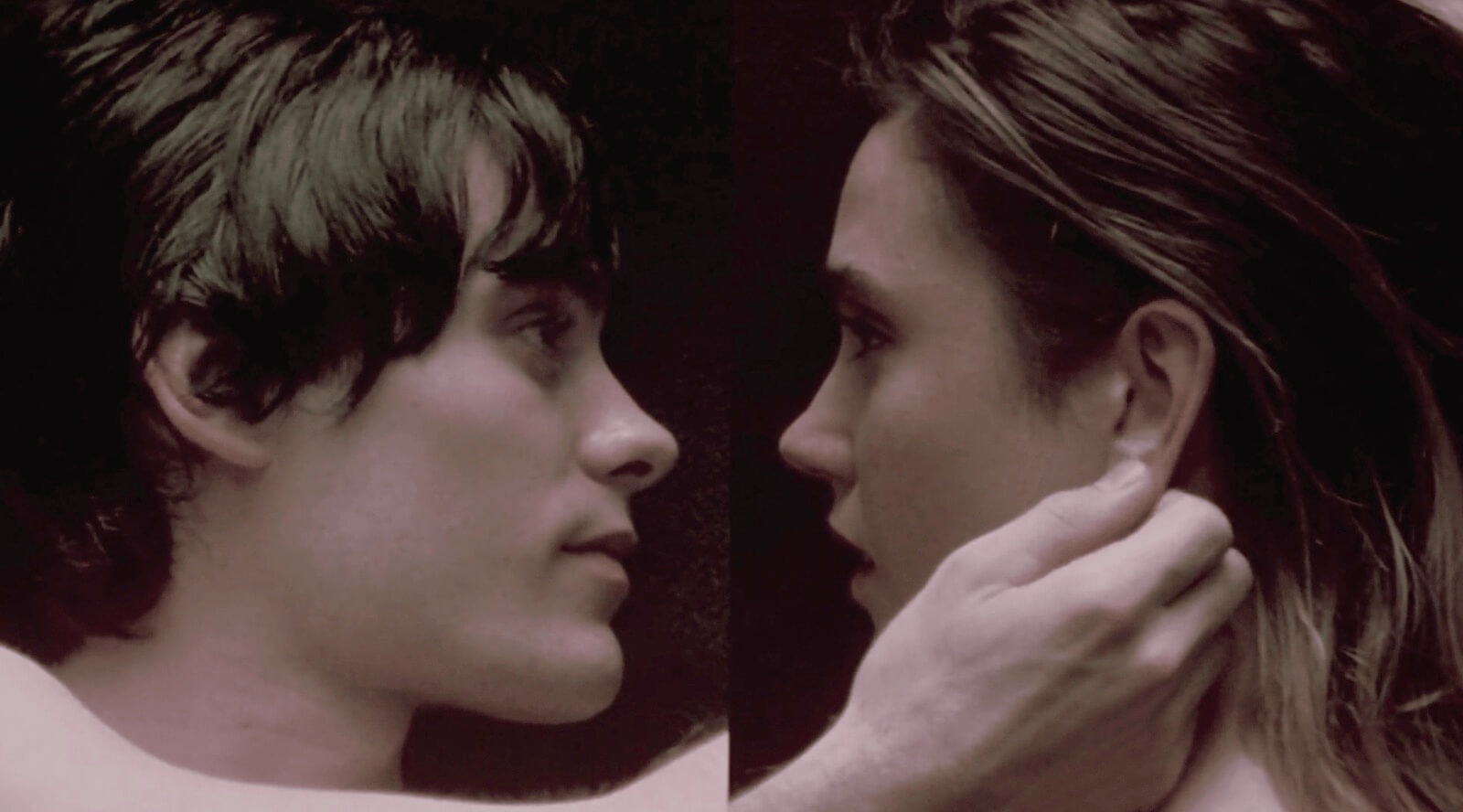
Disconnected lovers
A more optimistic reading of this scene sees two characters in love. The split screen allows us to watch them in close-up as they confess their love for each other. At the same time, on the other screen, we see extreme close-ups of them caressing each other.
A less optimistic reading reads the split frame as a barrier between the two. Laying in bed, they still can't be as close as they think they are.
Their dedication to their drug habits is stronger than their dedication to each other. This couple will divide slowly and tragically over the course of the film. And here we see that divide beginning.
Aronofsky also uses an editing technique in Requiem for a Dream he dubbed "hip hop montage." In short, this is a quick montage, using rapid-fire actions with exaggerated sound design.
Hip Hop Montage DEFINITION
What is a Hip Hop Montage?
A term popularized by Darren Aronofsky for a rapid-fire montage, often the steps completing a specific action. Each image is also given a corresponding and exaggerated sound effect.
Filmmakers like Edgar Wright use hip hop montage for comedic effect. But how can it be used dramatically?
In the film, Harry, Marion, Tyrone (Marlon Wayans) and Sarah (Ellen Burstyn) are all addicts. Their drug use is dramatized with this hip hop montage for a couple of reasons.
First, it highlights just how easy and routine drug use has become for these characters. The routine is perfectly realized with the sound design.
The combination of repeated images with repeated sound effects hammers this idea home.
Second, the use of extreme close-ups makes these objects, and their importance, more pronounced. With addiction, the primary focus for the individual is whatever they're addicted to. For Marion, Tyrone, and Harry, it's heroin. For Sarah, it's diet pills.
In the moments where they are shooting up or popping pills, the drugs are the only thing that matters. In these montages, that's all we see because that's all they see.
3.2 Time-lapse in Noah
Time-lapse/montage hybrid
With editing, time can be manipulated, which is one of the key advantages that cinema has over other art forms.
A time-lapse is often used to compress time. This is typically done with a traditional montage, which marks the passing of time with a series of isolated shots or scenes.
It can also be done in a time-lapse. Time-lapse attempts to capture the action all at once in a series of still images that are combined into a single shot. When the camera moves during the series, we call this a hyperlapse.
CINEMATOGRAPHY DEFINITION
WHAT IS HYPERLAPSE?
When taking a time-lapse shot, the camera is moved incrementally between each shot. The final product is a time-lapse in motion.
In his biblical epic, Noah, the creation sequence is a masterful manipulation of time using a mixture of montage and time-lapse.
Time-lapses often present motion in smooth and uninterrupted moments. There is an inherent beauty in watching a flower bloom in front of our eyes, for example. This is not how we witness the world’s creation in Noah.
As the world comes to life, we watch it bubble and break and grow. We witness the chaos and natural energy of terraforming. And the presentation of the images matches and enhances this effect.
The images behave like a time-lapse but are actually constructed as a montage. When the fish walks on land, we follow the animal crawling on the ground. The animal's motion and position in the frame are consistent but the background changes with every new shot.
A time-lapse that covers billions of years would simply take too long. Aronofsky smartly employs this time-lapse/montage hybrid to skip through the millennia.
There is a staccato, jittery feel to this sequence. It is not a graceful, smooth birth. It is jagged and rough, primal and aggressive.
This aggression is made clear when Noah discusses man’s history with violence. A single blow from one warrior onto another is chopped up and shared by many warriors. This time-lapse/montage doesn’t just visualize the passage of time, it illustrates our lineage back through time.
4
Production Design
Aronofsky's Worlds
4.1 Thematic Juxtaposition in Black Swan
Echoing theme in design
Black Swan is a binary movie. It is about contrast and competition between opposing forces. It pits black vs. white, good vs. evil, and sanity vs. insanity.
Aronofsky uses these binaries to inform his production design as well.
How and why does he do this?
Let's start with color theory, or more accurately, the lack of color. Black Swan is almost 100% neutral in its color palette. There are some bright pinks in Nina's room, and the club scene is a dazzle of light and color. The final performance of Swan Lake has some theatrical lighting as well.
But a large majority of the film is desaturated, leaving black, white and gray.
The black vs. white is informed by the plot of the ballet Nina (Natalie Portman) is set to perform.
But this is also supported in the costume choices. Nina is almost always in faded pinks or white. Her rival, Lily (Mila Kunis), is often in black or dark colors.
We can see this black/white contrast in the sets as well.
Finally, mirrors are a major motif in the film. As Nina begins to lose her identity, as it splits in two, mirrors and reflections become highly symbolic. Mirrors don’t just reflect, the present an opposite image where right is left and left is right.
Nina’s mental collapse is anchored by her seeing doubles, which makes the use of mirrors a no-brainer.
If you want to see how deep the mirror motif goes in Black Swan, we've included many examples in a StudioBinder shot list.Natalie Portman’s award-winning performance is a show-stopper.
Aronofsky is able to support and surround her performance with techniques that restate the themes.
Related Posts
4.2 Gritty Realism in The Wrestler
Presenting a Character’s World
Everything in The Wrestler is meant to ground us in reality. The approach in the film is much closer to documentary realism than any sort of Hollywood style.
The world of our protagonist, Randy "The Ram" Robinson (Mickey Rourke), is harsh, cold and gritty. The handheld camera, lo-fi lighting, and editing all contribute to this realism.
But what sells this idea more than anything is the locations.
Ram is living a less than lavish life 20 years after his wrestling career declined. He lives in a mobile home, or in his van when his landlord locks him out for neglecting to pay rent.
This is a comeback story of sorts. As Ram plots towards a reunion match with The Ayatollah, it's important to see just how low he has gotten.
Establishing shots are critical to establishing this world. Whether it is a payphone near the train tracks or a rundown trailer park, Ram's world is presented to us warts and all.
We've collected some of these establishing shots in our StudioBinder shot list. See for yourself what gritty realism can add to your own projects.
The realism of The Wrestler helps us empathize with Ram's plight. Even if this were a high budget film, and it managed to "recreate" these locations, it would not be as effective.
We know what's real and this film gets us as close as we'd ever want to go. And, because of that, our hearts are with Ram all the way.
5
Sound and Music
in Aronofsky Films
5.1 Subjective Sound Design in Pi
Listening to pain and paranoia
Pi is a gritty, low-budget, black and white thriller. Max Cohen (Sean Gullette) is a mathematician in search of a divine number that explains the universe. But his obsessive quest is hampered by cluster headaches. He is also paranoid that shady organizations are after him and his work.
Aronofsky is able to heighten Max's state of mind through sound design. The headaches Max experiences are crippling. The pain is often so bad that Max blacks out.
How does Aronofsky use sound to simulate what it must be like in Max's head?
Let's consider this early scene in the film when Max suffers one of these attacks. First, the music is a consistent, pulsing thump. More than just a heartbeat, it feels more like a countdown as Max waits for the pain to hit.
Suddenly, a flash cut to his eyes is paired with a sharp, feedback sound effect. The headache strikes and the pain is made visual and aural.
Then, the sound cuts out. The pain is apparently gone. Max stares at his front door and the multitude of locks and deadbolts. And intense rattling comes on the soundtrack as the handle slowly turns.
His paranoia has replaced the headache.
The door is shaking in the frame, the locks about to burst. These sounds are amplified, doubled and distorted. If we are to understand Max's paranoia, it comes through sound design.
5.2 Thematic Music in Pi
Matching music with character
The musical score in Pi is driven and informed by the subject matter. The electronic instruments and drum machines that dominate the score are thematically motivated.
Music is mostly used for suspense but it can also be used to establish the world or inform the character.
Let's talk about how Aronofsky uses music in Pi.
Max is surrounded by technology. His apartment is overrun with keyboards, monitors, wires and electricity. Clint Mansell's score is pure electronica. It is pulsing drum beats, echoed beeps and chilling half-melodies.
This fits perfectly in the film. It adds a layer of world building and it also builds character. Consider this scene in the diner when Max talks numbers with Lenny. Lenny says, "See? There's math everywhere," which sends Max into his own head as he watches cream swirl in his coffee and smoke spiral in the air.
When you're breaking down your scene, it might be helpful to include other department heads, especially when considering a scene like this. A ton of sounds are required, so looping in your composer might be a good idea.
We’ve used StudioBinder’s script breakdown to show you how you might communicate with your composer regarding the music you want for the scene. Here's what it looks like initially.
But down below under "scene notes," you can include notes and video as reference points. Check it out below!
On the soundtrack, we hear looped beeps and boops. At this moment, Max is thinking, calculating, trying to see the patterns in the cream and smoke.
His mind operates like a computer and the soundtrack reminds us of that.
Related Posts
Up Next
A Guide to Paul Thomas Anderson
As we’ve seen, Darren Aronofsky films explore the darkest and most unknown corners of human reality. His filmmaking style is just as striking as his plots and characters.Want to continue on with our series on auteur filmmakers?
Up next is a deep dive into the work of Paul Thomas Anderson, an artist with a very different but equally exciting approach. Want to create a shot list like the director of Requiem For A Dream? Sign up for StudioBinder and start building your project for free.
Up Next: The Complete Guide to PTA →
Showcase your vision with elegant shot lists and storyboards.
Create robust and customizable shot lists. Upload images to make storyboards and slideshows.
